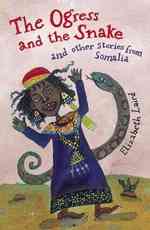Full Description
A theoretical and practical guide to using corpus linguistic techniques in stylistic analysis
The use of corpora in stylistics has increased substantially in recent years but until now there has been no book detailing the theoretical basis and methodological practices of corpus stylistics. This book surveys the field and sets the agenda for this fast-developing area. Focusing on how to use off-the-shelf corpus software, such as AntConc, Wmatrix, and the Brigham Young University (BYU) corpus interface, this step-by-step guide explains the theory and practice of using corpus methods and tools for stylistic analysis. Eight original case studies demonstrate how to use corpus tools to analyse style in a range of texts, from the contemporary to the historical. McIntyre and Walker explain how to develop appropriate research questions for corpus stylistic analysis, construct and annotate corpora, make sense of statistics, and analyse corpus data. In addition, the book provides practical advice on how to manage the transition from quantitative results to qualitative analysis, and explores how theories, models and frameworks from stylistics can be used to enhance the qualitative phase of corpus analysis. Supported by detailed instructions on how to access and use relevant corpus software, this is a user's guide to doing corpus stylistic analysis. For students and researchers in stylistics new to the use of corpus methods and theories, the book presents a 'how-to' guide; for corpus linguists it opens the door to the theories, models and frameworks developed in stylistics that are of value to mainstream corpus linguistics.
Contents
Acknowledgements; Tables; Figures; Boxes
Chapter 1: Combining corpus linguistics and stylistics
1. Introduction 2. What is a corpus? 3. A brief history of corpus linguistics 4. The emergence of corpus stylistics and problems with its definition 5. Style and stylistics 6. Corpus stylistics versus cognitive stylistics 7. Aims of the book 8. Structure of the book
Chapter 2: Using corpora to support qualitative stylistic analysis
1. Introduction 2. Strolling with intent: an exercise in corpus informed stylistics 3. Collocation and semantic prosody 4. Case study: irony in 'Aftermyth of war' 5. Conclusion
Chapter 3: Constructing and annotating corpora
1. Introduction 2. Designing a corpus: representativeness and sampling 3. Building a corpus: collecting and storing data 4. Adding metadata to a corpus: mark-up and annotation 5. Summary: suggested steps to building a corpus 6. Case study: investigating the 2000AD comic strip 'Judge Dredd' 7. Conclusion
Chapter 4: Testing hypotheses and answering research questions
1. Introduction 2. Corpora in stylistics 3. The concept of corpus-based and corpus-driven linguistics 4. The value of intuition 5. Hypotheses 6. Objectives and research questions 7. How big was Dickens's vocabulary? 8. Objectivity in stylistics 9. Case study: Hemingway's authorial style 10. Conclusion
Chapter 5: Making sense of significance
1. Introduction 2. Vocabulary size 3. Keyness 4. Collocation 5. Case study: salience and foregrounding in David Peace's 1974 6. Conclusion
Chapter 6: Cognition, character and corpus stylistics
1. Introduction 2. A cognitive stylistic approach to characterisation 3. Constraints on subtitles 4. Case study: Case study: subtitling and characterisation in Tinker Tailor Soldier Spy 5. Conclusion
Chapter 7: Pedagogical corpus stylistics
1. Introduction 2. Stylistics in the L2/FL classroom 3. Using corpora in the classroom 4. Developing corpus activities 5. Case study: from internal deviation to external norms via Adrian Henri's 'Tonight at Noon' 6. Conclusion
Chapter 8: Historical corpus stylistics
1. Introduction 2. Studying style diachronically and synchronically 3. Choosing appropriate corpora and tools 4. Case study: discourse presentation in Early Modern English 5. Case study: Frequencies and functions of modal auxiliary verbs in Early Modern English journalism 6. Conclusion
Chapter 9: Real-world applications for corpus stylistics
1. Introduction 2. The impact of applied stylistics 3. Language Unlocked 4. Wmatrix 5. Case study: corpora and the self-presentational style of the UK Green Party 6. Implications of the research 7. Conclusion
Chapter 10: The scope of corpus stylistics
1. Introduction 2. The problem of definition 3. Corpus linguistics and stylistics: a symbiotic relationship 4. Conclusion
Appendix 1: Corpora for corpus stylistics; Appendix 2: Software for corpus stylistics; References








